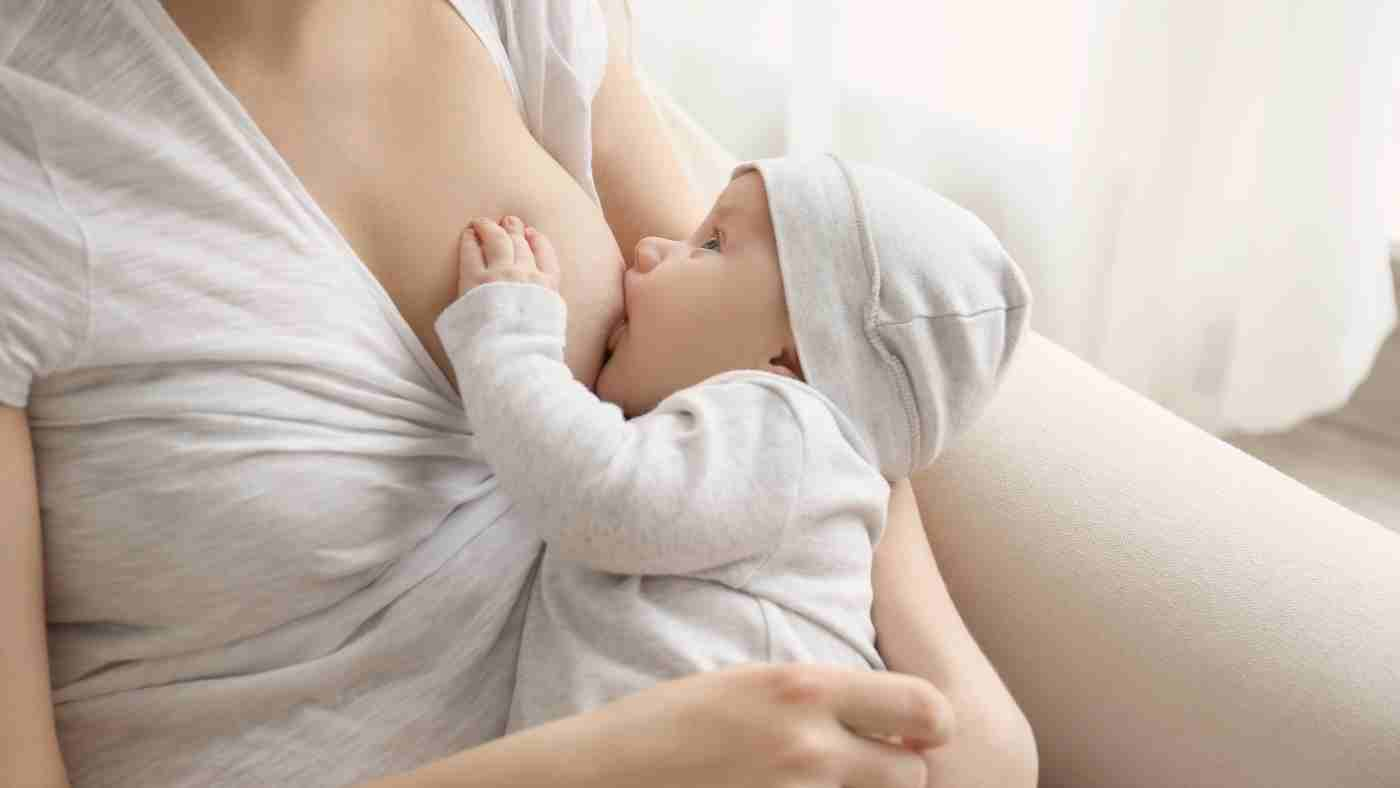There’s a lot about winter that leaves us looking ahead and longing for summer days — the cold weather, the snow, the dry air, the shorter days, the earlier sunsets, and the dry, painful, and uncomfortable skin and nipples. Wait, what? If you’ve been there, you understand! Especially if you’re pregnant or breastfeeding in the winter. Just like you may experience dry eyes or flaking skin in the winter because of low humidity and drier air, other parts of your body experience changes in the winter months as well. The weather can lead to dry skin and itching anywhere on your body — including your breasts or nipples, as they have thinner skin than other areas of your body.
Something called vasospasm is common in winter, as it occurs when you’re exposed to cold air. What happens is the muscles of the nipples tighten for longer than normal as an effect of the cold.1 Vasospasm is often identified by intense pain, like a stabbing or throbbing once baby is done nursing, or general pain that lasts anywhere from seconds to hours.2 While vasospasm can have effects such as discomfort or change in nipple color, the good news is that it’s temporary, so when you return back to the warmer weather, it should go away.
While vasospasm isn’t uncommon, it can be exacerbated in women who are breastfeeding. Occasionally, a condition called Raynaud’s syndrome can occur, which is when you experience spasming and tightening of blood vessels in extremities that leads to uncomfortable symptoms. Raynaud’s — which only affects around 3-5% of the population in the U.S.1 — is more commonly experienced by women for the first time when they are breastfeeding. Often, women with Raynaud’s of the nipple stop breastfeeding earlier than they originally intended because of the pain they experience. So, what can you do to make sure this doesn’t happen to you?
To avoid nipple vasospasm, try to avoid going from warm to cold weather too quickly. Layer clothing when you’re going out into cold weather, warm your car up before you get into it in the winter, and have a towel or clothing ready quickly when you get out of the shower. Nurse your baby in a warm environment and put your bra back in place as soon as baby is done nursing. Using a warm compress on your nipples may also help. Try massaging or stretching the muscles around your breasts to help increase the blood flow to the area. Like your fingers and toes, the blood flow to your nipples isn’t as abundant as it is to the more central parts of your body, so make sure they have plenty of layered coverage to keep warm. Supplements like fish oil or magnesium may help, as they relax the blood vessels.3
In general, dry, itchy nipples are actually a normal side effect of pregnancy, so most of the time, it’s not anything to worry about. From hormone changes to skin stretching as your body is preparing to accommodate baby, there are a lot of changes happening throughout your body during pregnancy into breastfeeding. If you’re experiencing dry skin from the weather, try these recommendations:
- Don’t use too hot of water in the shower. The hotter the water is, the more likely it is to dry out your skin and strip your skin of its necessary oils.
- Use gentle soaps and body washes, especially if you have sensitive skin, that aren’t as harsh on your skin and cause dryness.
- Instead of rubbing skin dry with a towel after a shower, gently pat it dry. Patting dry helps retain moisture.
- Always moisturize after a shower to keep your skin soft and healthy.
If you’ve been breastfeeding, you have likely already experienced sore or cracked nipples, mastitis, breast engorgement, thrush, or any other number of issues. But when it’s cold? These problems can be even worse. If you have trouble with any part of the breastfeeding process in the winter, you’re not alone. Nipples understandably become more sensitive than normal when you’re breastfeeding. Add to that the cold weather and you’re bound to experience some discomfort.
An organic nipple balm can help with the discomfort that comes from sore, painful, and cracked nipples caused by breastfeeding. As it’s made with simple, natural ingredients, there’s no need to wipe off before feeding as it’s safe for both mom and baby. However, placing a disposable or washable nursing pad on after feeding can help avoid any stains from the natural ingredients as well as helping to keep your nipples covered and warm.
While the pain and discomfort may be present, know that there are things that can be done to combat the discomfort. From vasospasm and dry skin to a plugged milk duct or problems latching while breastfeeding, know that you’re not the first to have struggled with this! Consult your lactation specialist for help with breastfeeding tips and as always, if pain persists, please consult your doctor for further direction.
References
- HealthCentral Why Do My Nipples Hurt in Cold Weather? https://www.healthcentral.com/article/nipples-hurt-when-cold
- What To Expect How to Treat Nipple Vasospasms and Nipple Blanching When Breastfeeding. https://www.whattoexpect.com/first-year/breastfeeding/nipple-vasospasms-nipple-blanching/
- The Royal Women’s Hospital Nipple Vasospasm. https://www.thewomens.org.au/health-information/breastfeeding/breastfeeding-problems/nipple-vasospasm


